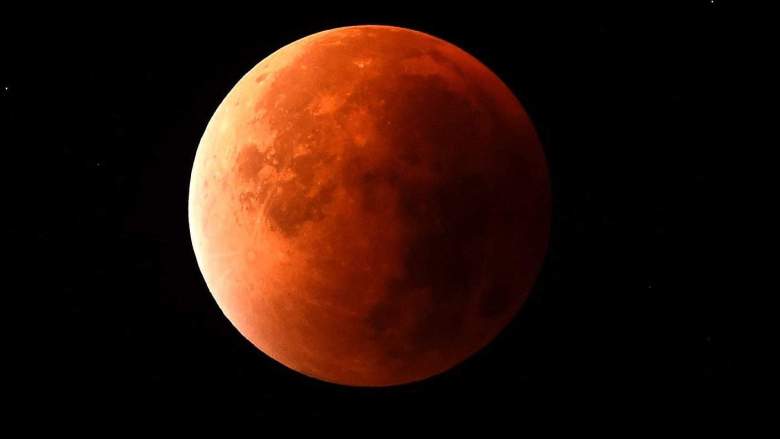
Getty
Tonight’s lunar eclipse is a sight you don’t want to miss. Not only is this a supermoon that marks the moon’s closest orbit to the Earth, but it’s also a time when the moon appears red in the sky. On top of all of that, the moon is also passing through the only total lunar eclipse you’ll see in 2019. That’s why you don’t want to miss the moment of total lunar eclipse tonight.
The moment of greatest total lunar eclipse will be at 12:12 a.m. Eastern (11:12 p.m. Central/9:12 p.m. Pacific.) The moon will enter the umbra (the time of significant darkening) at 11:41 p.m. Eastern and begin to exit at 12:43 a.m. Eastern, according to NASA, which is the end of the total lunar eclipse.
The UTC time for the maximum eclipse is 05:12:14 UTC (i.e. 12:12 a.m. Eastern.) Check out the link here to translate UTC to your local time zone.
The eclipse will begin about 9:36 p.m. Eastern tonight, at which time the moon is going to start to slightly dim. By 2:48 a.m. Eastern, the entire event will be over. Here’s a more exact schedule, as shared by NASA:
- 9:36 p.m. Eastern (6:36 p.m. Pacific, 8:36 p.m. Central): The edge of the moon will enter the penumbra.
- For the next 57 minutes, the moon will dim slightly as it enters the penumbra. You will only notice slight dimming.
- 10:33 p.m. Eastern (7:33 p.m Pacific): The edge of the moon will begin to enter the umbra, which will cause significant darkening. Some say the moon looks like it has a bite taken out of it during this time that gets bigger and bigger.
- 11:41 p.m. Eastern (8:41 p.m. Pacific): The moon is completely inside the umbra, which is the beginning of the total lunar eclipse. (The moon will be looking reddish orange around this time.)
- 12:12 a.m. Eastern (9:12 p.m. Pacific, 11:12 p.m. Central): The moment of greatest eclipse for the moon.
- 12:43 a.m. Eastern (9:43 p.m. Pacific): The edge of the moon begins to exit the umbra and enter the opposite side of the penumbra. This is the end of the total lunar eclipse.
- 1:50 a.m. Eastern (10:50 p.m. Pacific): The moon is completely outside the umbra, and is moving out of the penumbra.
- 2:48 a.m. Eastern (11:48 p.m. Pacific): The eclipse event is over.
Here’s a video explaining how the lunar eclipse works: